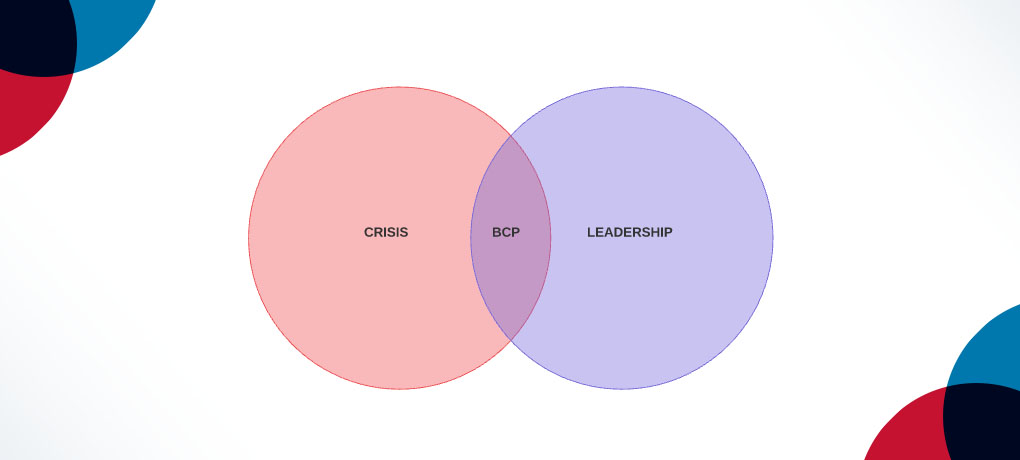Natural disasters and IT system failures can throw a company’s carefully laid projections and plans into disarray. Such crises can result in damaged business equipment, jeopardize employee productivity, and disrupt supply chains.
That’s why having proactive and reactive strategies like a business continuity plan (BCP) and a board crisis management plan is imperative. Doing so can help businesses mitigate the serious consequences of crisis situations.
What is a Business Continuity Plan (BCP)?
BCP acts like a disaster recovery plan — identifying the potential threats to an organization — making it easier for a team to build the right prevention and recovery system. The aim of a BCP crisis management is to maintain system integrity, service quality, and competitive advantage despite skeletal operations and extreme conditions. A business continuity strategy is essential for organizations from all industries.
Crises may not happen all the time, but even the smallest possibility of occurrence shouldn’t be ignored. To put things in perspective, here are some major crises that affected several companies around the globe:
- Back in 2021, hackers attacked Microsoft’s vulnerable and unsupported versions of its email software, Microsoft Exchange. Email accounts of over 250,000 organizations worldwide are affected, requiring Microsoft to issue additional security updates.
- Quanta, a supplier to Apple, was met with a $50 million ransomware attack by REvil, a Russian ransomware-as-a-service gang. The ransom was demanded in exchange for Apple’s stolen blueprints of future product designs.
- Last year, a historic winter storm in Texas caused several days of blackouts, leaving an estimated $23 billion of residential and commercial damages. Munich Re, an insurance company, reported insured losses of over $15 billion. According to Munich Re, natural disasters in 2021 cost the world’s insurers around $120 billion.
- Since the pandemic, reports have it that cybersecurity attacks also increased fivefold. In Switzerland, around 2700 reported firms were attacked in the past year. One of these is Comparis Group, which the attackers demanded $400,000 to get the website back online. Other notable cyberattack victims are the Stadler Rail company and the contractor RUAG.
Why Does Your Organization Need a Business Continuity Plan?

Assets and human resources are top considerations for organizations when creating their disaster recovery planning. By setting predetermined protocols, companies can assure quick restoration and continued growth of operations following crisis situations. But besides disaster recovery, below are some significant reasons business continuity management is a must:
Crisis communication — Having a communications strategy is an integral element of a BCP. Your team will be aware should any disruption or outage occur and what specific communications strategies to use. These can include the use of communication channels, mass notification systems, Intranet, and more.
Reduced downtimes — Downtimes cannot only impact the workplace productivity and efficiency, but also the financial aspect. With a business continuity strategy, organizations can better handle human resource or technical outages. Failover services or cloud backups that are part of BCPs allow businesses to deliver uninterrupted services to customers in emergency situations.
Minimized financial losses — Speaking of the company’s financial aspect, crises can cost companies thousands of dollars. Rolling blackouts, data corruption, and Internet outages can lead to expensive downtimes that your business may not afford. This is where business continuity plan and disaster recovery plan come in. Incorporating strategies such as risk analysis, cloud services, and offsite backups can help minimize financial losses.
Brand preservation — A crisis can hurt your relationship with customers. A smooth and uninterrupted operation can build and maintain customer trust, preserving brand reputation towards its industry. A business continuity strategy also allows you to assure the market that any acquired customer information or data is preserved and secured during a crisis.
It’s commendable if your organization already has a strong and updated BCP in place. To make this easier for you, here’s a comprehensive guide to making a business continuity plan that suits your company’s needs.
Download Guide to Making a Business Continuity Plan
Three P’s of Crisis Management
In a nutshell, crisis management refers to the reactive approach that businesses take to continue operations during crises. Business continuity, on the other hand, is proactive planning. But while crisis management and business continuity are two separate disciplines, they still go hand-in-hand. To come up with a broader and more effective BCP, consider these three principles of crisis management:
Properties
- What assets are at the highest risk of being affected in a crisis?
- What are the most important assets that must be secured first?
- Which assets require duplicates in case of an emergency?
- Which resources are critical for business continuity?
- Where can data be stored to ensure its safety at all times?
Processes
- What processes are the most crucial?
- How can procedures be altered or adjusted in adverse conditions?
- Where can operations continue if the original location is inaccessible or unavailable?
- How will clients, customers, and stakeholders be informed if processes need to be temporarily stopped?
- How long can the organization suspend business operations without incurring unsustainable losses?
People
- Who can perform the tasks necessary to carry on operations if the majority of the employees are unable to work?
- Does the organization have enough skilled employees to take over tasks for their colleagues?
- What kind of psychological effects will the crisis leave on the employees?
- How to help employees cope with the after-effects of the crisis?
- How can leaders communicate with one another and with their employees?
Answering these questions can guide you in creating a solid business continuity and disaster recovery strategy. At the same time, business leaders like board directors and C-suite managers must show resilience and flexibility to maintain morale. After all, employees need proactive leaders to turn to during crisis situations. Keep in mind that your people are your business’ most valued asset. Consider their needs and boost their morale by setting up strong business continuity and disaster recovery plans.
~~~
Stay connected with your board even in the middle of a disaster. Convene lets you and the board collaborate in real-time and make sound decisions during a crisis. It also lets you protect confidential documents digitally in Convene’s secure repository. This electronic board portal software can effectively help your organization in its hour of need. Enquire now about Convene and see how it can benefit your organization.
Jennie Chiu is a Business Development Manager and is part of Convene Asia’s team. Given her experience working before in the BFSI industry, she has gained extensive knowledge in crisis management and business continuity. Jennie eagerly shares information on crafting strategies to help businesses thrive in the digital age.










